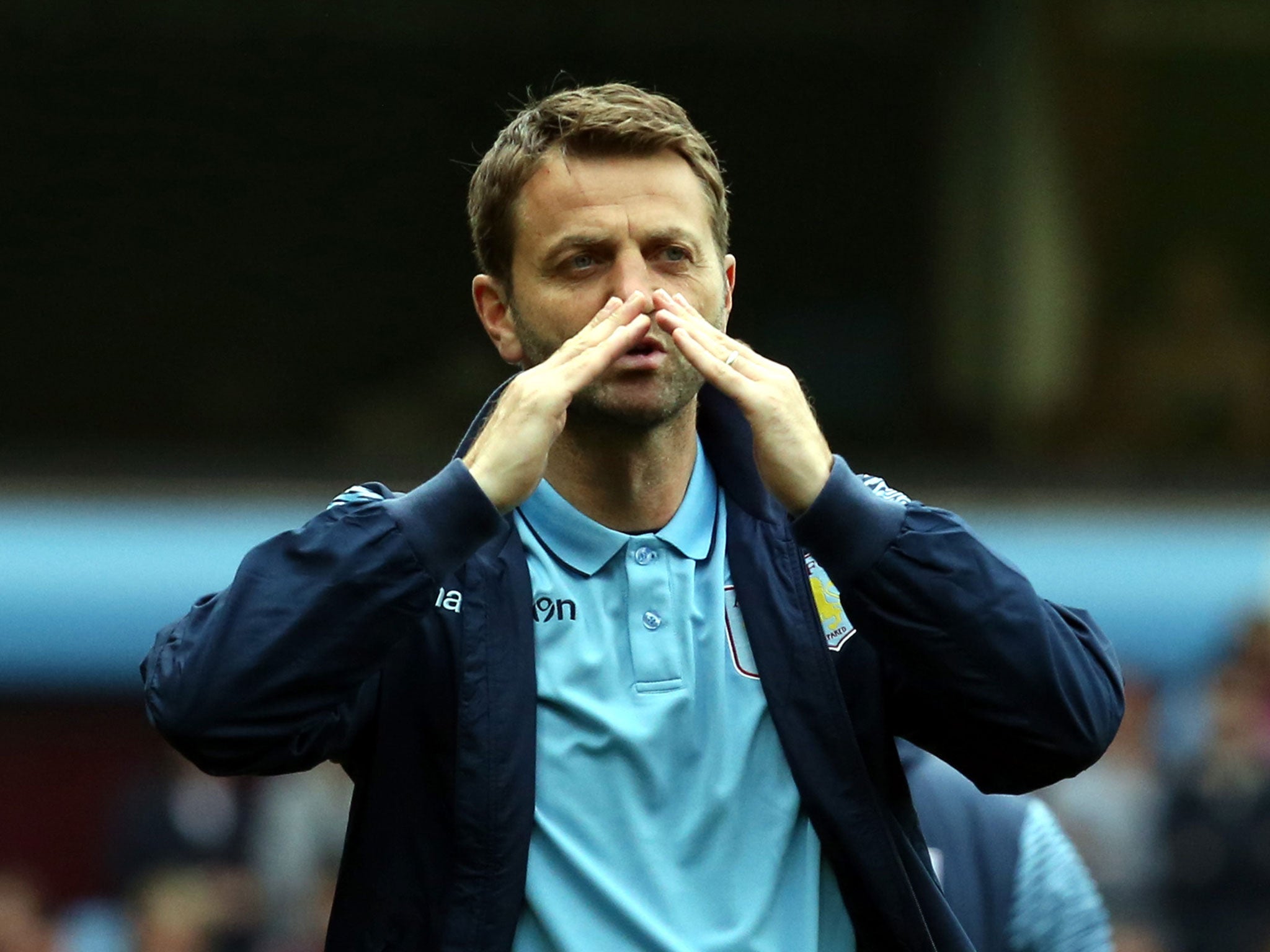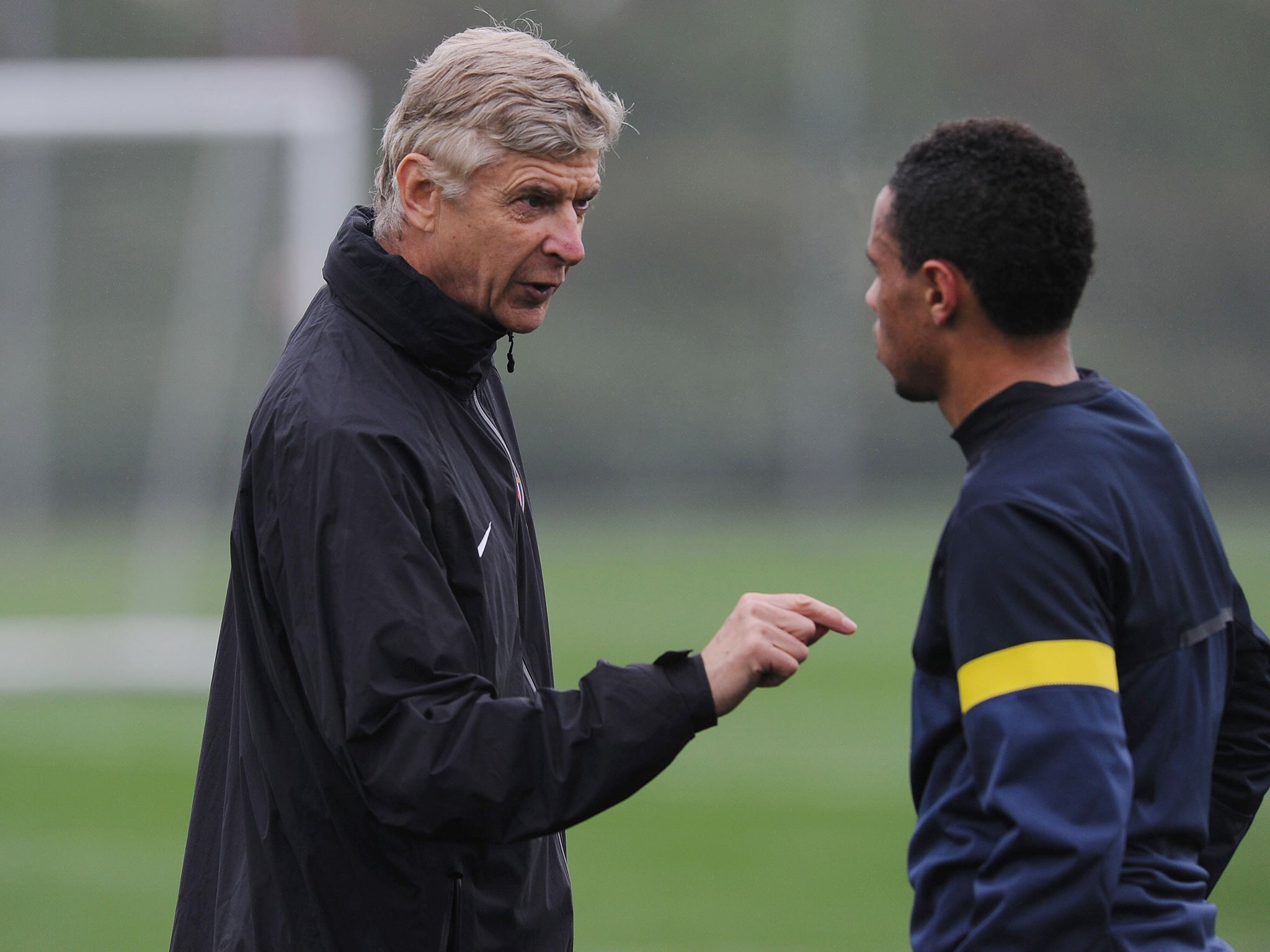Arsenal vs Aston Villa: Tim Sherwood must play a game of two halves for Aston Villa to cause an FA Cup final upset
Ahead of the match at Wembley in which Arsenal are heavily favoured to win, Danny Higginbotham looks at what the underdogs can do to re-write the script

Your support helps us to tell the story
From reproductive rights to climate change to Big Tech, The Independent is on the ground when the story is developing. Whether it's investigating the financials of Elon Musk's pro-Trump PAC or producing our latest documentary, 'The A Word', which shines a light on the American women fighting for reproductive rights, we know how important it is to parse out the facts from the messaging.
At such a critical moment in US history, we need reporters on the ground. Your donation allows us to keep sending journalists to speak to both sides of the story.
The Independent is trusted by Americans across the entire political spectrum. And unlike many other quality news outlets, we choose not to lock Americans out of our reporting and analysis with paywalls. We believe quality journalism should be available to everyone, paid for by those who can afford it.
Your support makes all the difference.Arsenal are the clear favourites to lift the FA Cup but the pronounced pattern of their games this season points very clearly to a way in which Aston Villa can beat them at Wembley.
In short, Villa need to play a compact, patient, waiting game for the first 45 minutes because Arsenal are vulnerable if they do not manage to make an impact in the first half of games. If they haven’t scored by the interval, we often see Arsène Wenger’s players growing impatient, becoming desperate and even reckless in the way they try to force a breakthrough. And that is when they can lose all shape and give Villa an opening.
Tim Sherwood will be telling his players that containment is the byword for the first half, and that the greater ambition – Villa’s Plan B – comes in the second.
Conceding early would be a calamity for Villa because we have seen time and again that once Arsenal go ahead they are very hard to knock out of their rhythm. In each of their last five Premier League wins they scored inside the first 37 minutes, and another characteristic of this excellent side is that they score in clusters.
The wins over Liverpool, Arsenal and West Bromwich Albion have all shown that – the latter of those games particularly so, with Arsenal going four goals up inside 40 minutes.
When the going’s good we see a solid triangle between Arsenal’s central defenders and the holding midfielder. But though the defensive midfielder Francis Coquelin has had a very good season and impressed me a lot, the shape goes when the desperation sets in. The full-backs blaze forward at the same time and all those forward-thinking players of Wenger’s do the same thing.

What Arsenal lack is a defensive midfielder who is vocal as well as physical, capable of saying to Hector Bellerin, ‘What are you doing? Stay back’, when the young Spanish full-back advances at the same time as Nacho Monreal and leaves the back line exposed.
This lack of leadership in defensive midfield is Arsenal’s Achilles’ heel and that is borne out in the way they can fall apart if they don’t get a goal on the board in the first half.
The numbers don’t lie. Seven of Arsenal’s last eight defeats have come in games in which they hadn’t scored by half-time and – with the exception of the Spurs fixture – you have to go right back to the Capital One Cup defeat by Southampton last September for an example of them losing after scoring before the interval. They’ve trailed at half-time on six occasions this season and have won none of those games.
Second-half goals just don’t seem to come into their picture: 13 of their last 15 goals have come in the first half of games.
That’s why Villa can say to Arsenal: “You go for it. We’ll just sit tight, be disciplined and wait for our moment. We’ll let you play in front of us, but not behind us. Then we’ll try to find you out.”
How do they do that tactically? Sherwood will play his usual 4-3-3 formation, but if were him I would have two defensive midfielders – Ashley Westwood and Tom Cleverley or Fabian Delph – and just one working box to box. We talked on these pages a few weeks ago about how Sherwood’s effective change since succeeding Paul Lambert was to have two working box-to-box and one holding, but for the reasons outlined Villa need initially to contain Arsenal. The worst thing they could do is to play a high line and come unstuck in the way that they did against Southampton – a club, like Arsenal, with plenty of attacking threats.
In the first half, they need to keep the space between the back four and midfield five minimal; have the lines so close they’re near enough touching hands, as a coach would say, but with Jack Grealish and Gabby Agbonlahor bombing forward to join Christian Benteke the minute there’s a turnover in possession. Benteke’s ability to hold the ball up creates time for them to get up near him and join the attack.

It’s in the second half that things can get very interesting if Villa have managed to contain Arsenal. That’s when they can take the risk, leave just Westwood back. Now they can seek to capitalise on the raggedness and sense of disconnection that comes with that frustration that seems to occupy Arsenal when they are struggling for the breakthrough.
After an absorbing season, with managers changing systems and finding ways of dealing with new ones, it feels like this match could be a fitting finale, with a fascinating tactical core to it.
Join our commenting forum
Join thought-provoking conversations, follow other Independent readers and see their replies
Comments